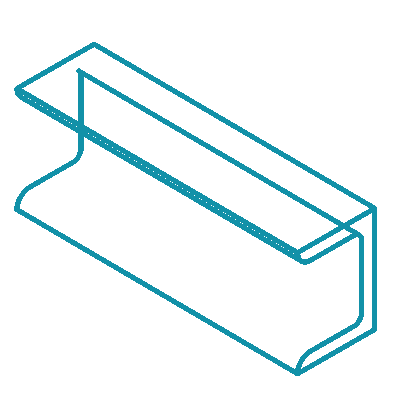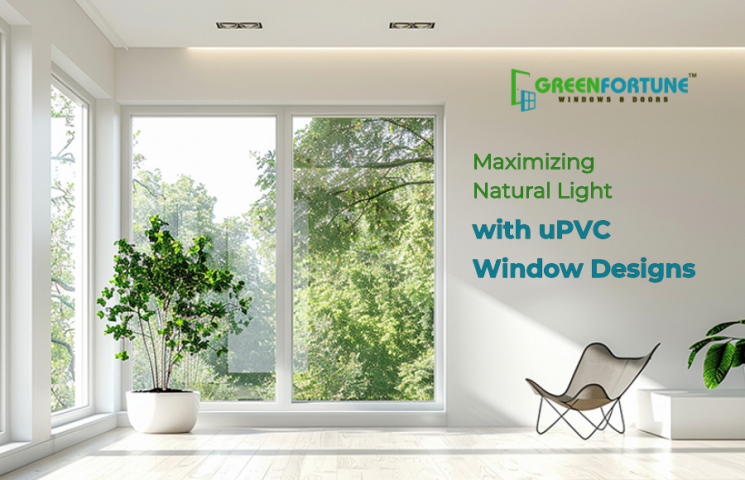
How to Customize Your uPVC Windows for a Unique Look
July 29, 2024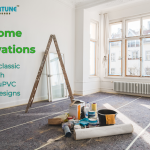
Old Home Renovation: Blending Classic Charm with Modern uPVC Window Designs
August 5, 2024Natural light can transform any room, making it airy, spacious, and inviting. Beyond aesthetics, more light windows and doors provide numerous benefits, from reducing energy costs to enhancing mood and well-being. The right uPVC window designs for homes can further maximize these advantages, ensuring a bright and welcoming ambiance. In this blog, we explore how uPVC windows enhance natural lighting and the various designs available in the market.
Some of the benefits of uPVC Window Designs
Energy-saving: uPVC windows and doors are great insulators to hold heat during the winter and summer. This, in turn, reduces the expenses of artificial heating and cooling, making your electricity bill lower.
Little Maintenance: Unlike wooden frames that require frequent painting and sealing, uPVC window ideas need minimal upkeep. A simple wipe-down with soapy water keeps them looking fresh and new for years.
Durability: uPVC is very durable and weather-resistant. It does not rust, rot, or fade, thus guaranteeing the long-lasting look and functionality of your windows.
Sound Insulation: uPVC windows designs for home offer excellent sound insulation, blocking outside noise and providing a peaceful indoor environment.
Various Types of uPVC Windows for Maximizing the Intake of Natural Light
uPVC casement windows
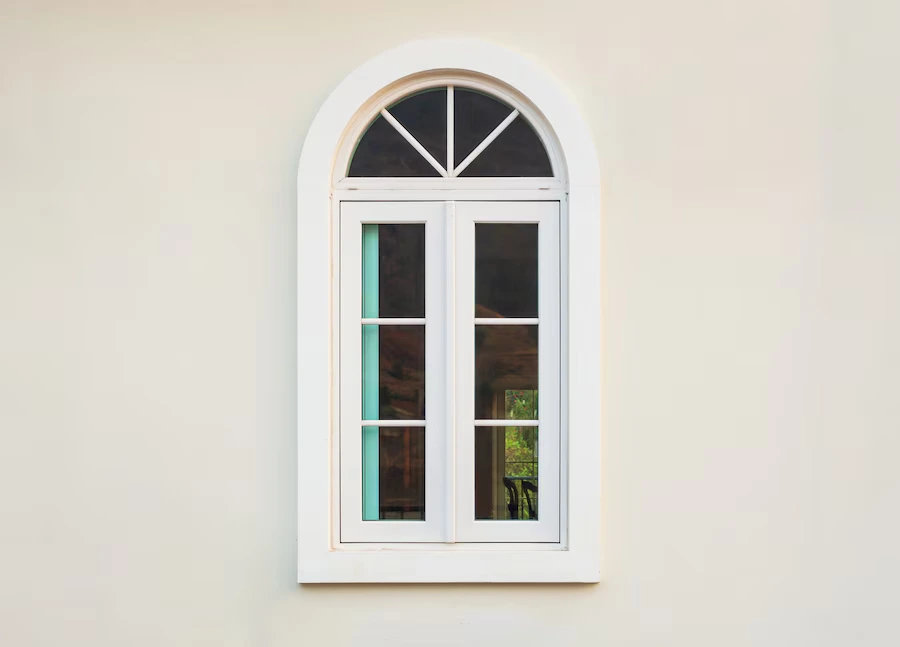
Source: Freepik
uPVC casement windows are hinged at the side and open outward like a door. These are among the most popular types of windows and offer amazing benefits. When opened, these windows provide an unobstructed outside view while also allowing fresh air inside.
Pros: good ventilation, easy to clean, excellent for unobstructed views.
Cons: Need space for opening; fewer customisation options than sliding windows.
Sliding window designs
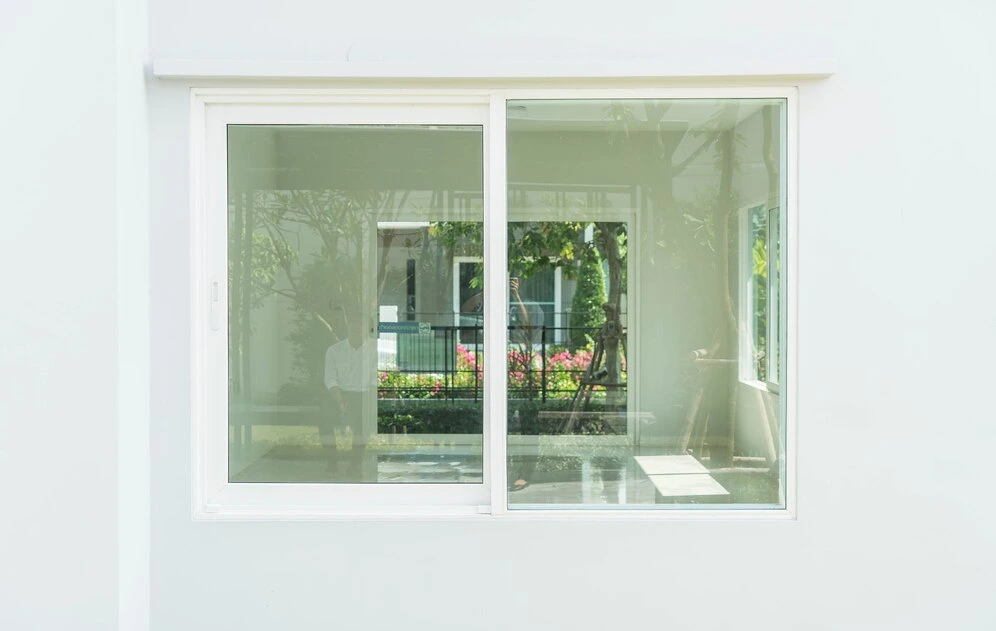
Source: Freepik
Sliding window designs are composed of two or more sashes that slide in a horizontal direction. They are appropriate for rooms where space is limited because they do not project either inwards or outwards when opened. Sliding windows have a modern style that can cover large openings to maximize light.
Pros: space-saving, easy operation; it can cover large openings.
Cons: Less ventilation relative to uPVC casement windows for the same size; more challenging to clean the exterior.
Fixed Windows
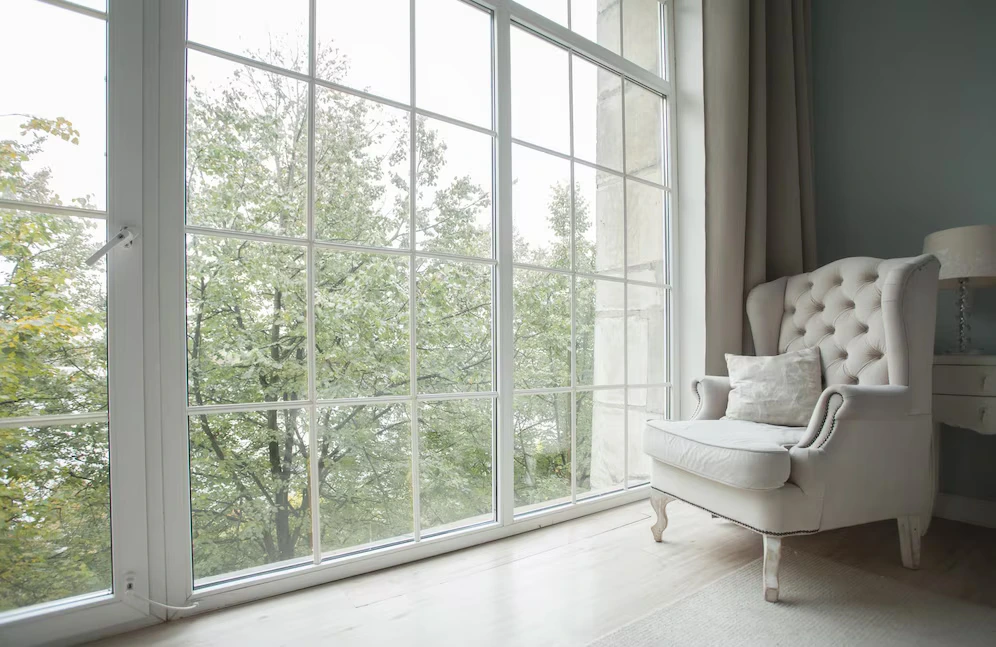
Source: Freepik
Fixed windows, also known as picture windows, are windows that are fitted with large glass panels and are primarily designed to afford an uninterrupted view and allow maximum light to flow into a room. Since there’s no bar or muntin in between, these windows provide a clear view and bring you closer to the outdoors. They are generally used with other window types to enhance an attractive look.
Pros: maximum light access, panoramic views, and ease of maintenance.
Cons: poor aeration, less flexibility.
Bay and Bow Windows
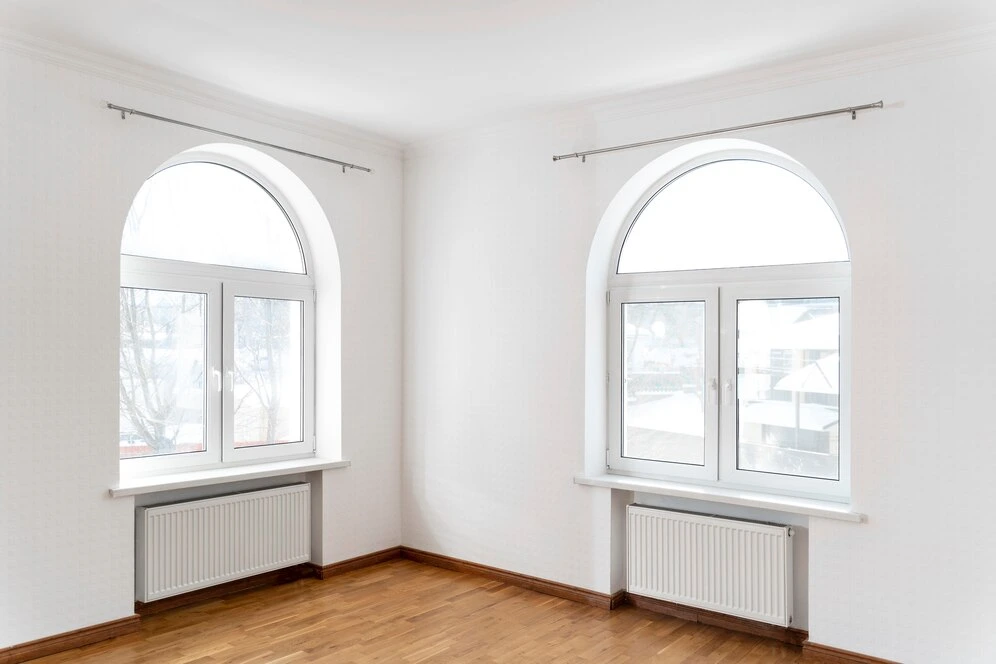
Source: Freepik
Bay windows usually combine three window panels projecting from the main walls. A bow consists of four or more window panels that make an outward curve. Both windows provide additional interior space and allow light to fall from different angles, creating a well-lit space.
Pros: added room within; good light capture; aesthetic appeal.
Cons: Relatively more difficult to install.
French windows
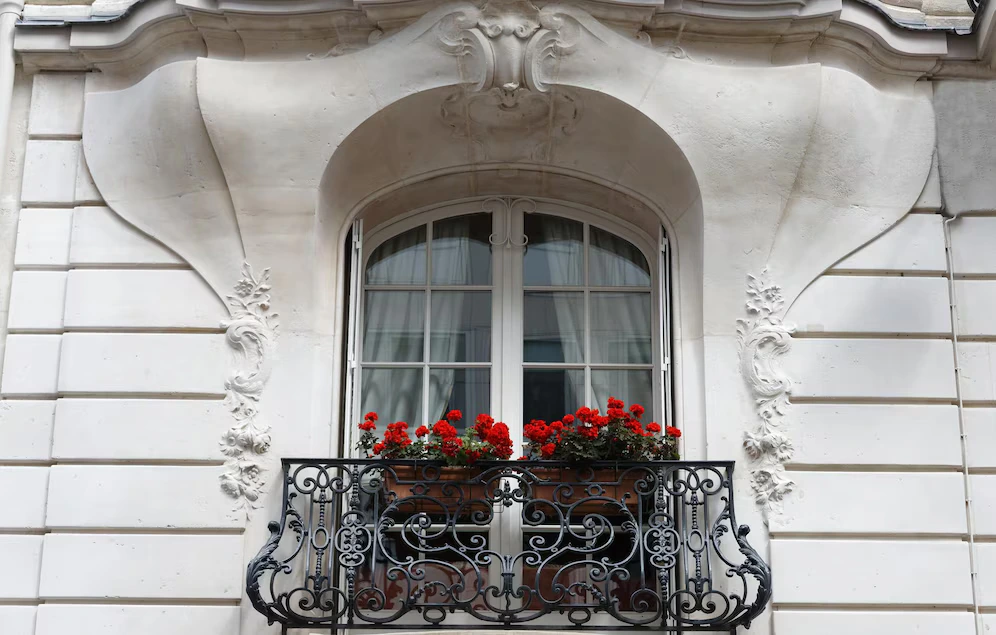
Source: Freepik
French windows are a type of casement windows that open either outwards or inwards without a central mullion and allow an uninterrupted view, providing maximum penetration of light. They are also very effective in increasing the aesthetic appearance of a room.
Pros: unobstructed views, great ventilation, and sophisticated design.
Cons: Can take up outdoor space
Tilt and turn windows
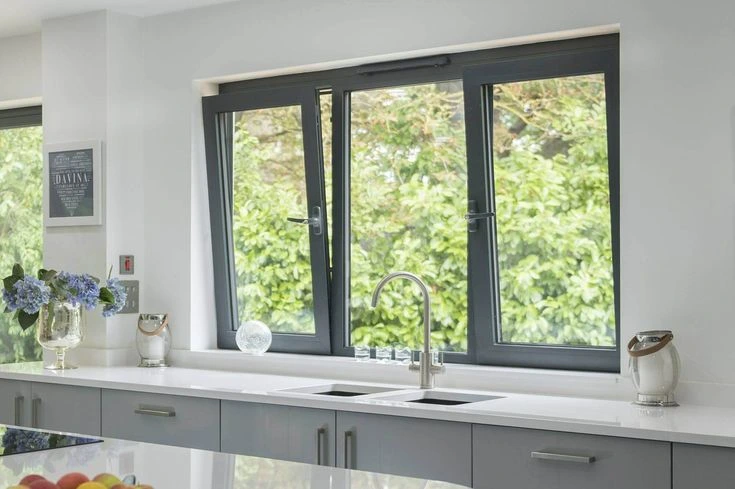
Source: Pinterest
The two-in-one functionality of tilt and turn windows allows them to either tilt in from the top for ventilation or open in from the side like a casement window. They can allow varying amounts of light and ventilation depending on their size.
Pros: versatile openings, good ventilation, safe.
Cons: Relatively more difficult to install; Need space for the turning function.
Awning windows
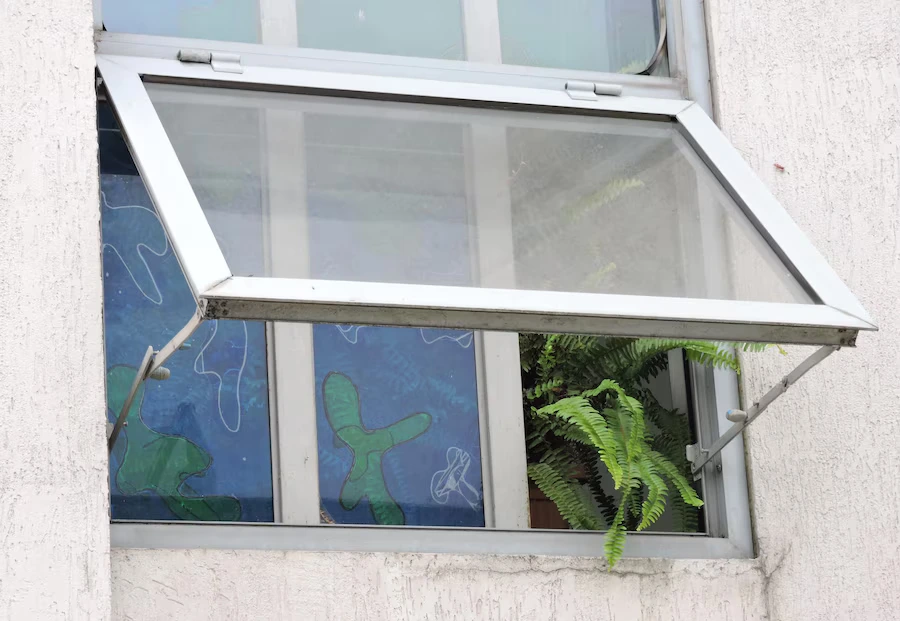
Source: Freepik
Awning windows allow for light and ventilation and can be kept open even during light rain. They hinge at the top and open outward; they are usually positioned high on walls for privacy while allowing natural light into the room.
Pros: Ventilation is available, rain-resistant, and privacy is guaranteed.
Cons: Need space to open outwards.
Additional Tips to Enhance Natural Light at Your Home
Light-painted walls and ceilings: Go for the light wall and ceiling painting that reflects more light to create a bright environment in a room.
Mirrors and Reflective Surfaces: Placing mirrors and reflective surfaces in strategic locations can enable the reflection of light all over the space, thus amplifying natural light.
Minimalist Window Treatments: Sheer curtains or blinds that can be fully drawn during the day ensure that your internal windows for extra light remain unobstructed.
Clean Windows Regularly: Dirt and grime can block light. Keeping your natural light windows clean will maintain their transparency and brightness.
Conclusion
Installing the right uPVC windows can make your home brighter, more energy-efficient, and aesthetically appealing. From window light design for home improvement to selecting the perfect uPVC windows colors design, the right choice can make a significant difference. Whether you are renovating or constructing a new house, uPVC window design ideas offer a smart investment for comfortable and efficient living spaces for years to come.
Discover GreenFortune, Your Partner in Quality uPVC Windows and Doors
At GreenFortune, we are proud to offer high-quality uPVC window designs at affordable prices. We offer and install a variety of window types for all homes with both durability and aesthetics in mind.
Contact us to find out more about the custom uPVC windows that we offer. Whether you are renovating your existing home or building a new one, partner with us to elevate the comfort levels and energy efficiency in addition to the style quotient of your space provided by our superior-quality uPVC windows
Frequently Asked Question
Q. Which window types allow a good amount of natural light inside?
Selecting uPVC window types like casement windows can help you ensure maximum natural light in the living space, as these types of windows come with large glass panes and open outward, providing no barrier to airflow. Great for smaller spaces, sliding window designs provide wide glass areas and a contemporary look. Fixed windows do not open, providing the best light possible and unencumbered views. Since bay and bow windows project out from the walls, they capture light at three angles instead of just one, which means more natural lighting in your home.
Q. How can uPVC windows be utilized to enhance energy efficiency and, therefore, cut costs?
The uPVC windows are praised for their high thermal insulation properties You can opt for double or triple-glazing windows to improve the energy efficiency of uPVC windows. This causes a decrease in dependency on artificial heating and cooling systems and, hence, a lower cost of energy and utilities. Besides, since uPVC is durable and rugged, it allows insulation to be more efficient by ensuring no drafts or heat loss.
Q. Can the uPVC windows be customized according to different home designs and preferences?
UPVC windows come with many choices in styles, colors, and finishes, ranging from traditional French windows to the most recent sliding ones. This makes it flexible to enhance both the source of natural light and the general outlook and utility of the home. These features then make uPVC windows flexible in their use, while at the same time maximizing natural light and making energy-saving improvements both in homes and workplaces.


